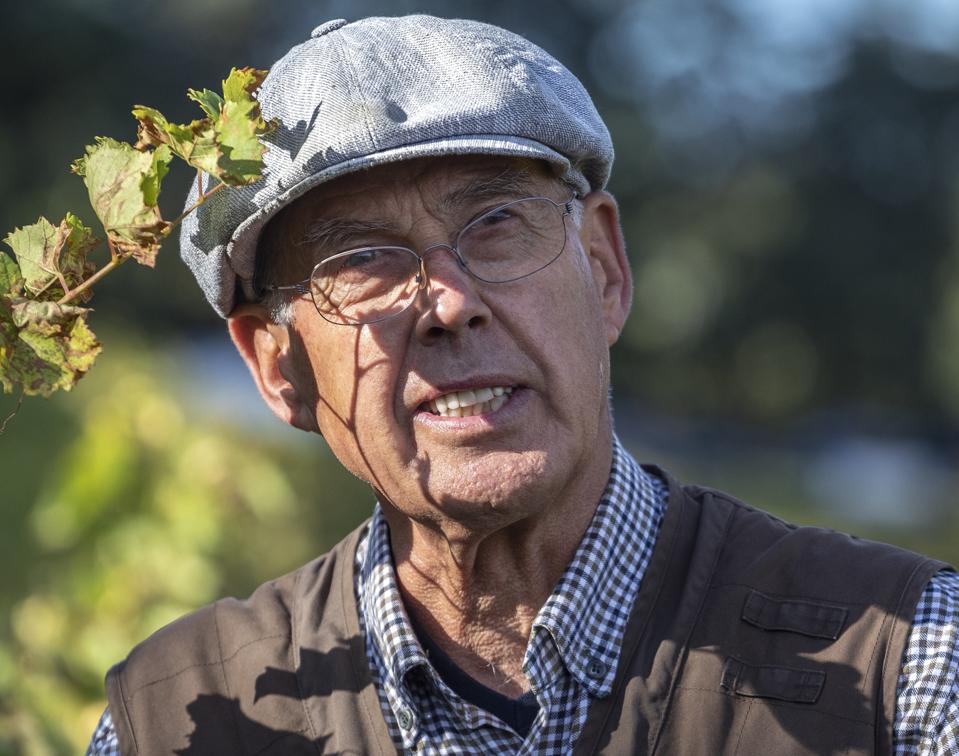On October 6th, American wine enthusiasts celebrate National Orange Wine Day. The famous producer of orange wines Josko Gravner explains his philosophy here.
When it comes to orange wines, wine lovers tend to have strong opinions, with no grey area in between. Some people love them, while others avoid them. It’s not just about taste or how the wines are made, but also about philosophy and lifestyle choices. Those who love this type of wine usually support the principles of the ‘natural wine movement’, which aims to produce wine in the most natural way possible, without chemicals or technology. However, when these wines originated in Georgia, the purpose was survival.
A Pioneering Wine
The roots of the orange wine category go back to a region that many consider the cradle of viticulture: the Caucasus, Georgia in particular. Here, the wines have been produced for thousands of years: over 8,000.
As archaeological excavations have shown, people used to ferment white grapes by putting them in large clay vessels called qvevri and leaving their skins and pips in contact with the juice. In doing so, the wine acquired an orange – or, better, amber – color, along with structure, tannins and phenolic compounds, which act as natural antioxidants and antimicrobials. The result was a wine that was more stable, capable of lasting over time, and being transported without spoiling, although quite different from white wines as we know them today. This tradition is still central to Georgian culture, but until about thirty years ago, almost no one knew about it, except for a few scholars and wine enthusiasts. Things began to change in 2000, when sommeliers and adventurous wine bars in London, New York, and Tokyo started featuring them as part of the “natural wine” movement. This was the beginning of a tendency that, for some wine producers all over the world, has become a consolidated viticultural and winemaking choice, not just a trend.
Josko Gravner’s Vision
Wine producers such as Josko Gravner and Stanko Radikon (the latter one unfortunately passed away in 2016), both from Collio/Brda, are universally considered the pioneers of orange wines in Italy. Any orange wine lover knows them and their wines. But how did everything begin? We reached out to Gravner to understand the origins of his journey in the wine realm, and particularly in that of orange wines.
Elisabetta Tosi: On your website, we read that at the end of 1980s, you took a trip to the USA. Why? What were you looking for, and what did you find?
Josko Gravner: I went to the US because I felt that what I was doing was no longer enough for me. I was looking for authentic wines, not manufactured ones. What I found instead was a lot of technique, a lot of appearance, but littletruth. I realized at that moment that I must go back to my roots.
Tosi: Qvevri, amphoras… Are they fashion or the expression of something deeper, such as a convinction of the producer?
Gravner: Fashion passes, conviction remains. I chose amphorae because I saw that vines and grapes require simplicity, silence, and listening. Amphorae are not a novelty; they are the oldest thing there is.
Tosi: You are currently known as the’master of amphoras’. What do you think about the producers who appear to have discovered them only recently?
Gravner: I don’t judge. Everyone has to follow their own path. If they use amphorae because it is fashionable, it won’t last long. If they use them out of conviction, then perhaps they will find something true.
Tosi: Who are the consumers of orange wines, and what are they looking for in these wines? What are you looking for in your wine?
Gravner: People who drink these wines are looking for something that is not standardized. They are looking for a flavor that is not always the same, but that tells the story of the land, the vintage, the weather. In my wines, they find what I am looking for: truth, purity, silence.
Tosi: How do you present an orange wine to someone who has never tasted it?
Gravner: I don’t present it. I pour it and let it speak for itself. It needs no explanation: if the person is ready, they will understand.
Tosi: Georgian orange wines have been around for thousands of years. Could there also be a future for the modern ones?
Gravner: I don’t know about the future. I know that without a past, there is no future. If we make wine thinking only about the market, then it won’t have a future. Wine will have it only if we make it with respect for the land and history.
“Insieme Orange”, An Inclusive Italian Orange Wine
Today, many Italian wine producers, from north to south, are venturing into the world of orange wines, mainly vinifying local white grape varieties. Younger wine lovers are especially drawn to this category of white wines, as they embody the qualities that modern consumers seek: authenticity, sustainability, and naturalness. In terms of food pairing, orange wine bridges the gap between white and red wine. They pair well with challenging vegetables, such as artichokes and asparagus, as well as umami dishes and spicy foods. Foods that most whites or reds barely pair with. If, once in a while, you love challenging your drinking habits and preferences and venturing into exciting new tasting experiences, and if you love oxidative styles, you could try “Insieme Orange 2023 Terre Siciliane IGT” from the Sicilian winery Feudo di Santa Tresa. It is a vegan-friendly organic wine made with a blend of Inzolia (80%) and Zibibbo (20%). The color is a bright golden orange; the scents are reminiscent of summer flowers, candied orange, and peaches with a touch of mint. In the mouth, it is very fresh, well-balanced, almost chewable, fruity, slightly astringent, and with a nice clean finish. A wonderful glass to commemorate National Orange Wine Day.

